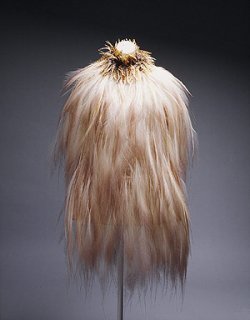The article continues :-
He seems magnetically drawn to the aristocracy, and yet reviles them, too. "They all believe in the Divine Right!" he exclaims in disgust. "John Jermyn used to say, 'I am the Law!' Getting rid of the Upper House is crucial. These people are becoming disenfranchised. Before, they had the land and the power. At least the power will be taken away." Roy is with Blair now. "He's absolute f*cking genius," he declares. "Amazing man, manipulative. He knows you won't get anywhere by rattling your sabre."
Roy willingly tells me his story, but seems hurt, distraught even, if I question details or appear to doubt his word. He phones me frequently, asking, "Do you think I'm lying?" as if lying is the last thing he'd do. Most of all, it seems, he wants me to like him. And trust him. He strokes my arm and says how soft my skin is. He hopes we will be friends when this is over.
Roy is a big, a bold man - "Not queenie at all," one friend says. And he seems indefatigable. Yet exhaustion caught up with him in Paris. His aristo mates were asking him to be godfather to their children. "I was getting so close to being their friend," he says, and it sounds perversely sweet. "Once, Jermyn said, 'You're one of us', and it struck a sword into my heart. I felt I could only let them down. I wasn't one of them. I ended up feeling profoundly guilty." He shopped himself to David Hallam, a gold-digging American rent boy and consort of Bristol's, and in 1981, the game up, he left Rendlesham behind in Paris and slunk back to Britain as plain Duncan Roy.
But old habits die hard. Now armed with a credit card in the name of Anthony Rendlesham, Roy couldn't help himself and continued the deceit. "It was like, 'Oh my God, it's all happening again. But I can't stop it.' At least they were all calling me Duncan. They thought I was Anthony Rendlesham pretending to be Duncan Roy."
With his keen instinct for being with the right people in the right place at the right time, he attached himself to the fast set that centred on London's most fashionable clothing store, Crolla. The Dover Street store was run by husband-and-wife team, Scott Crolla and Georgina Godley. "Duncan certainly hung around," says Godley. "He served people, but I don't think we paid him. Maybe in clothes. We used to go to Brown's Hotel for tea. Or he'd get the tea brought over on a silver tray and then pay for it with the Anthony Rendlesham credit card." Godley remembers Roy as arrogant, and dangerous. "The men got engulfed by it all and eaten alive," she says of his ability to ensnare them in complex relationships. One highly regarded art director, now married, "fell completely in love with him", she adds. "He knew the Rendlesham thing was fantasy, but he didn't mind at all. We were young, we liked anything that was good entertainment."
And so they adored Roy, who remembers his 21st birthday party in 1981 being featured in Harpers & Queen. "Scott threw me a fabulous party," says Roy. "Tom Dixon [now creative director of Habitat] did the door. Everyone was there: even WilliamBurroughs came. It was the party of the year. And in the magazine, under my picture, they put, 'Duncan Roy aka Anthony Rendlesham'."
But Roy was a little too flamboyant and fearless. His credit card fraud caught up with him in 1983. This might have been the heady days of Thatcher's Britain - "We were all able to claim our right, use our entrepreneurial abilities to nurture ourselves," says Roy - but he took the idea of entrepreneurialism a touch too far. Found guilty of obtaining property and services by deception, he served 10 months of a 15-month sentence in Brixton prison. His real crime, of course, was to have exploited the all-pervasive snobbery in British and Parisian society and its unconditional regard for the aristocracy, made a career of it and lived off it for several years.
Prison suited Roy, however. "I had a nice job in there. I was a bit of a celebrity. It wasn't so funny when I came out and realised that everyone thought I was bonkers. Someone said to me, 'You're just mad', and I really lost my temper." Plenty of people still believe Roy to be a bit mad, unpredictable and difficult to deal with. One acquaintance - who often courts the press, but doesn't want to be named on this occasion - says he'd give up his table at the Ivy if Roy was at the next one. "I still think he's proud of what he did in Paris. And I'm scared of him," he says.
After prison, Roy worked for Nacro (the National Association for the Care and Rehabilitation of Offenders) and lived in a council flat in Woolwich (albeit with a girl called Pandora). But before long, he'd taken up theatre, first working with Neil Bartlett (now director of the Lyric in Hammersmith), later on his own. Then, at the age of 30, he went to study film at Bournemouth and Poole College, and a little later embarked on a peculiar relationship with a richer older man. "What we had in common was that we could drink three bottles of Pouilly Fumé at lunch and still go shopping in the afternoon," says Roy. "He was loaded. There is a difference between just money and serious money."
The benefactor offered Roy the means to indulge his lifestyle or to pay for his films. It seems strange that someone as determined as Roy would choose the former, but maybe even the most driven need the occasional rest. To say that Roy lived the high life is to undersell dramatically the cocaine habit he developed. The relationship with the rich benefactor lasted seven years - "My longest". Roy's rejection of cocaine and alcohol has now reached its five-year mark, and he speaks of his sobriety with all the ear-bashing enthusiasm of the reformed addict.
And today, 10 years after leaving film school, and for the extraordinary sum of £300,000, Roy has completed his first full-length feature by filming on video with a six-week shooting schedule. His script, based loosely on the earlier part of his life, is strong. The art direction bears testimony to Roy's exquisitely good taste. The interiors and costumes are period-perfect. "They do style so well, people like Duncan," says Godley. "They've really studied it." Ironically, Roy paid £1,000 a day to film in the sort of grand houses where once he'd been an invited guest.
Roy says Aka is not the film he wanted to make as his first feature, that he was persuaded into it by Film Four, which then chose not to put it into development. "When they withdrew the funding, I was furious. I said, 'If I'm not going to be nurtured, I'll f*cking well do it on my own.'" He sold a house in Whitstable, inherited from his benefactor, to raise the money (he kept the one next door, where he now lives). He flattered an exceptional cast into working on deferred payment, among them Lindsey Coulson (best known as EastEnders' Carol Jackson), who plays the victimised mother, and Matthew Leitch in the Roy role. Diana Quick plays the Clare Rendlesham character with flinty hauteur. Bill Nighy and Georgina Hale also appear. All describe Roy as an excellent director, and say they would work with him again.
The film is dark and tense, and has been well received in the US. At its most recent showing at Outfest in Los Angeles, it garnered both the award as the audience's favourite film and the HBO cash prize for best new feature. "They love it because reinvention is part of their culture," says Roy. " They see it as a make-over movie - so what if you get caught, as long as you have a blast doing it. People over there will do anything to be a star, a celebrity. Here, people still perceive me as psychotic."
His attraction to powermongers undimmed, Roy has exchanged aristocrats for today's more significant mediacrats. "Last week, Will Self, Janet Street-Porter, Jay Jopling and Deborah Orr were sitting here," he says gesturing around his kitchen with obvious pleasure. When contacted, Self speaks well of the film, but of Roy says, "It's a bit of an overstatement to call me a good friend. He wants to establish instant intimacy. But he has known a lot of movers and shakers in his time. He's not Walter Mittyish." Indeed, an impostor Roy may have been, but he is less of a fantasist than he once was. Quick says, "I think he's got more real as he's progressed. He's done a lot of work to get this to happen."
Another well-known, but reluctant, acquaintance says, " I truly admire him. His work is genius. He is frighteningly intelligent. He creates his own tomorrow. But he obsesses. He gets on people's cases. He dips from being charming to having a look on his face that you think means he's about to kill you." Jacquie Lawrence, a former independent film commissioner at Channel 4 who has worked with Roy, says that he is surprisingly open to criticism of his work, but will get furious if he gets your voicemail and not you. "He'd get so angry. And then he'd make contrition an art."
Soon, however, Roy will be seeking new, more powerful friends - in Hollywood. The US reaction to his work, coupled with his being taken on by Bobbi Thompson (a powerful former William Morris agent), perhaps explains why he's heading for Santa Monica. He has been offered scripts, and been invited to join the Directors' Guild of America. "You can be part of the establishment in the US," he says. "Here, if you say you're a film-maker, people are suspicious of you. And it's just posh people who are making films. Dreadful inchoate films. I've got to go there."
At last, it seems, Roy might have found a place where he can just be himself
Aka is released on October 11.
I knew LADY Clare Rendlesham , and still have the bruises to prove it .
I used to save to buy from the menswear collection every Autumn/Winter , as Saint Laurent Rive Gauche , as it was known at the beginning , was the main men's label , along with Cerruti 1881 and other exclusive imports from France , available at those meccas of style , PIERO DE MONZI on the Fulham Road and BROWNS of South Molton Street , when it was opened by Sir William Piggot Brown , and modelled on the St. Tropez boutique ' CHOSES ' .
( Later to be taken over by the Burstein family of the other ' French ' boutique , FEATHERS of Kensington , who introduced the ITALIAN ' must have ' labels , like MISSONI and WALTER ALBINI ) .
She bullied her customers , ( She admired the BALENCIAGA vendeuse who bullied HERSELF into being completely refitted for a model dress that she bought from the Balenciaga Atelier in Paris ) , insulted their choices and was generally ' une monstre sacree ' , but we went back because of the clothes which were and still are the best that have ever been made , compared to today's offerings , such as those of PRADA et al . My collection of Yves Saint Laurent Rive Gauche menswear classics is the pride of my life , unfortunately and I suppose in some people's eyes , rather trivially .

La Rendlesham also owned the original London licence for CHLOE when it was dasigned by Karl Lagerfeld , so she really had the London scene sewn up .
Often to be spotted driving a small Lambretta , or parking her nippy little Alfa Romeo , entirely illegally on the Brompton Road or on New Bond Street where her shops held sway , she died of a heart attack , queueing in Chelsae Library , no doudt dying from a habit of AT LEAST 60 a day !!!
She naturally had the nastiest and brownest teeth of any
LADY that I have EVER encountered .
Ahh , the stories I could tell about my treatment at the hands of this woman .









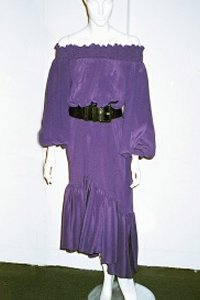
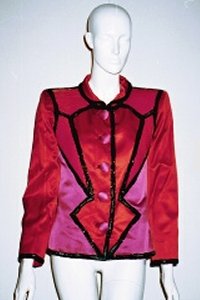
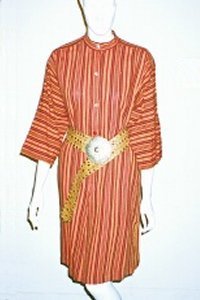
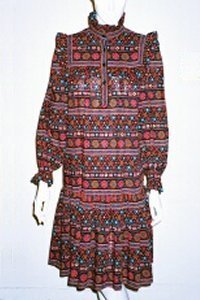


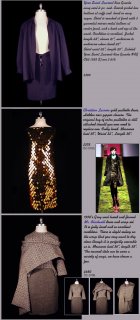
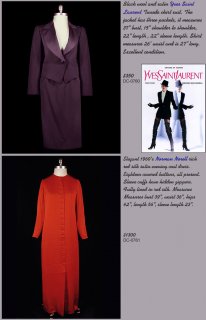
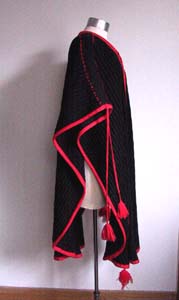
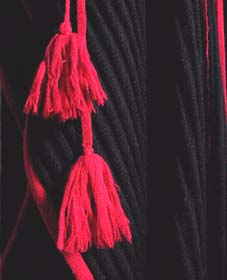
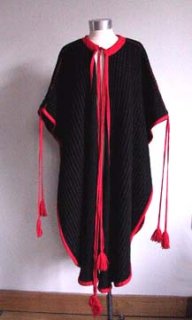
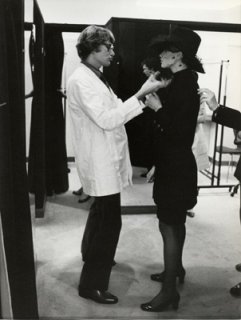
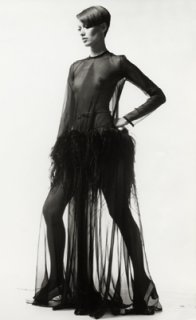


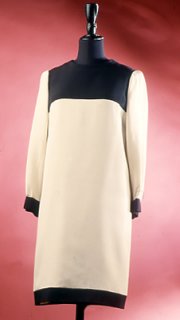
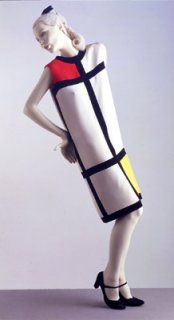
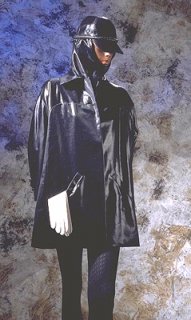
 ...
...
